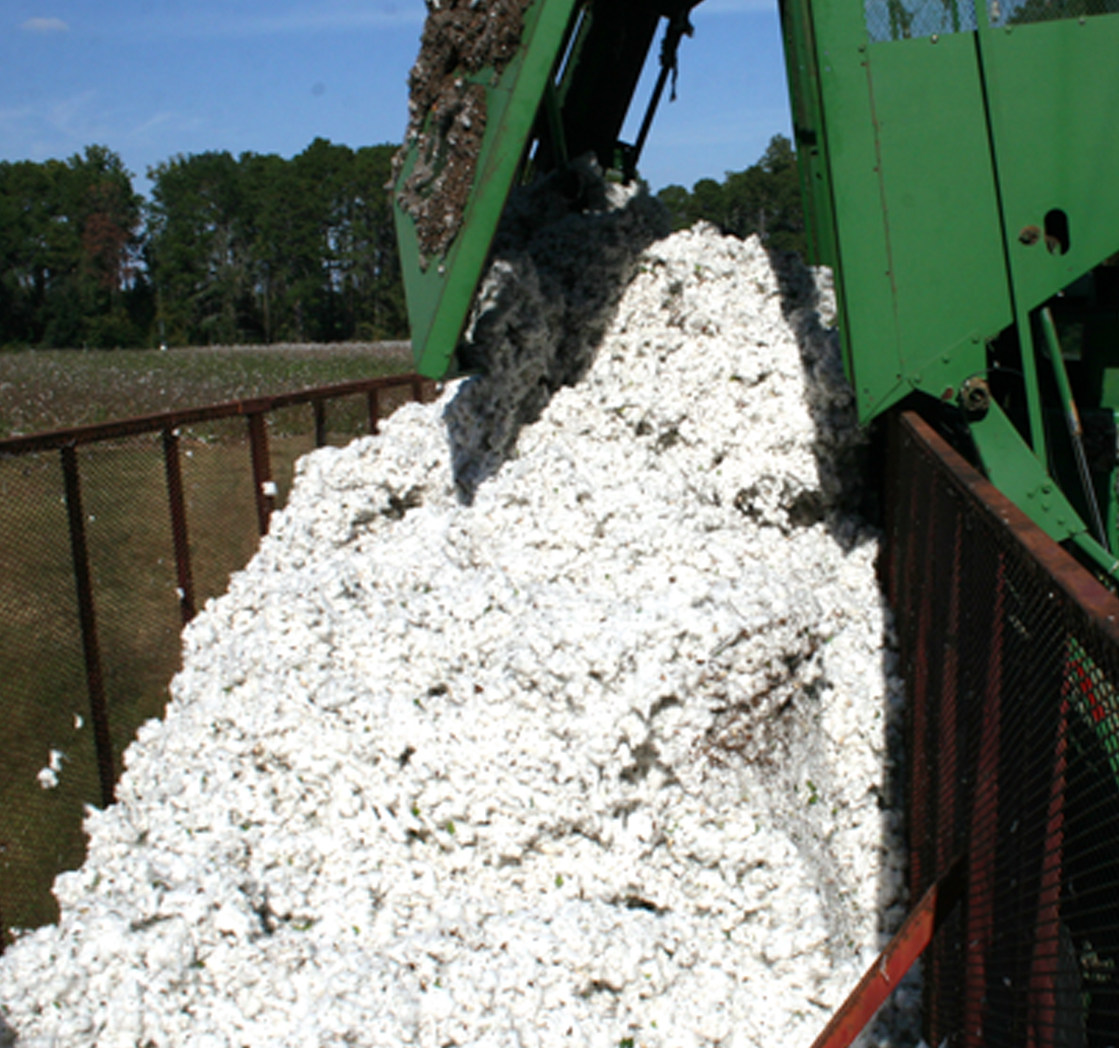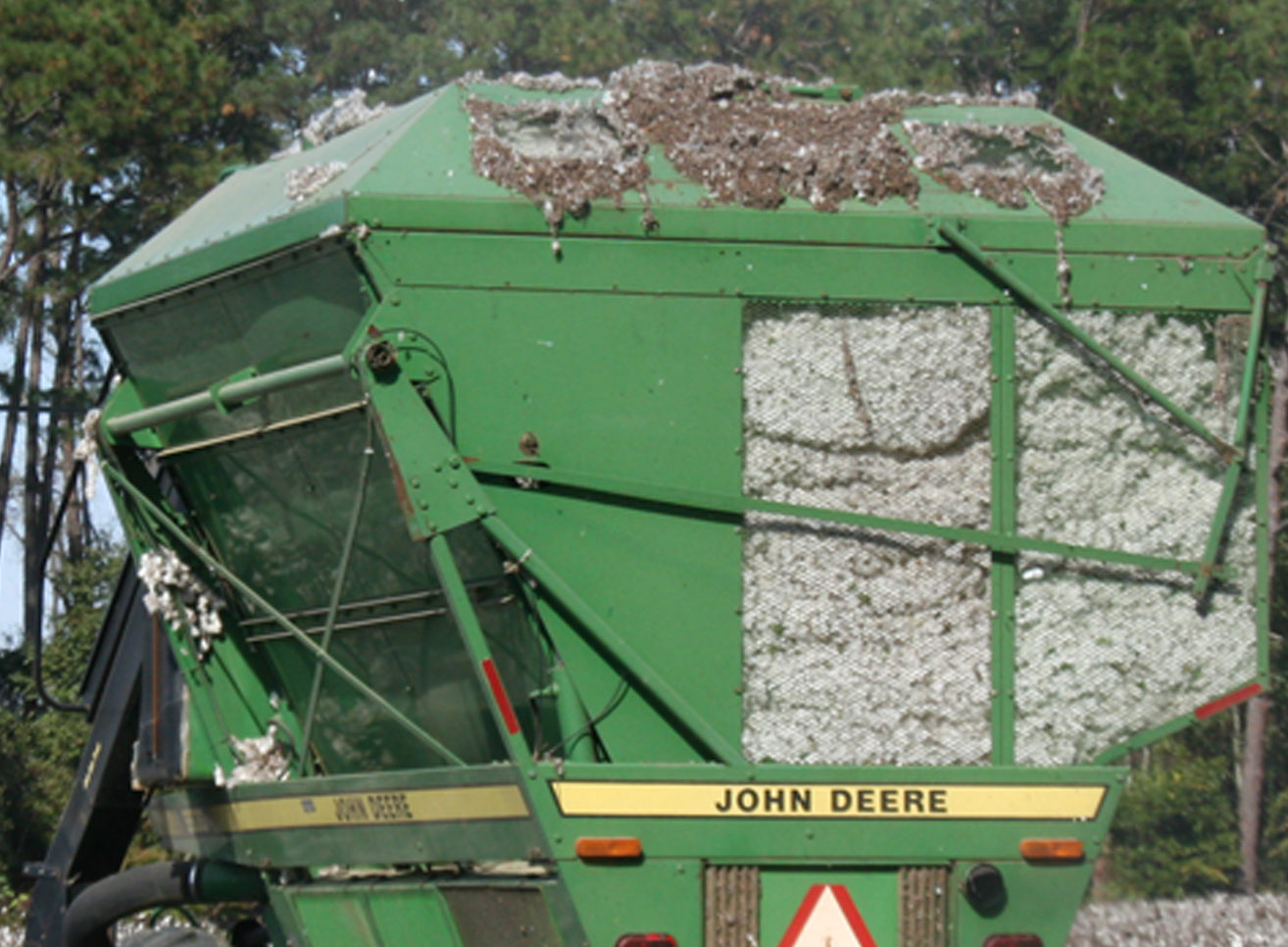Georgia cotton farmers who were kept out of their fields by wet conditions are now waiting for their late planted crop to mature. University of Georgia cotton expert Guy Collins estimates 30 percent of the crop still needs to be harvested.
Before cotton can be harvested, the plant’s leaves must be removed through a process called defoliation. Knowing the precise moment to defoliate can enhance yield potential and avoid profit losses.
To speed up this natural process, farmers spray a mix of various chemicals on cotton plants, Collins said. Just like trees, cotton leaves change color and fall off. “If the plant is close to doing that on its own, we speed it up for them,” said Collins who is based on the UGA Tifton campus.
Farmers scout fields to determine when to defoliate. Collins says scouting should involve covering all areas of a field if different variables are involved, such as one end of the field is taller with more immature bolls toward the top.
Normal defoliation methods are used during warmer weather. But, many of these methods are less consistent in cooler weather, he said.
And boll development slows down considerably in cooler temperatures and usually ceases when a frost occurs. Collins said this happened in Georgia a couple of times in November.
“If the plant’s not ready, we can’t make (maturity) happen,” Collins said. “We can get the leaves off but you might prevent some bolls from opening.”
Defoliation is typically done two weeks before harvesting. Sometimes the wait is as short as 10 days, but it can take as long as 21 days for the leaves to fall off the plant. And bolls require more time to open. In some cases, a second spray is necessary to remove all the foliage.
Cotton farmers have three objectives when defoliating cotton: (1) Remove the leaves from the plant; (2) Open the bolls or accelerate the boll-opening process; (3) Remove or prevent regrowth or young juvenile growth.
As the cotton agronomist for the UGA College of Agricultural and Environmental Sciences, Collins’ primary job is to educate county Extension agents on cotton issues. “They in turn train the growers. We get calls all the time about defoliation questions,” he said. “Defoliation is one discipline that is so finicky, so environmentally dependent, it’s very hard to make a broad stroke recommendation for product selection, timing, anything. There’s a lot of gray area where there’s not really a right answer every time.”
Because cotton defoliation is more of an art than a science, Collins says there are several methods farmers can use to determine when to defoliate.
One is the percent open boll method. Under most circumstances, if 60 percent of the bolls on a plant are open, then the plant is mature enough for defoliation. If less than 60 percent are open, then the unopened bolls are likely too immature, and early defoliation could result in yield losses.
Another method is the nodes above cracked boll method. The objective is to find the highest opened, cracked boll on the plant and count the number of nodes on the stem above it until you get to the highest-up unopened, harvestable boll. This implies the unopened bolls on the plant are close enough to maturity that defoliation can occur without compromising unopened bolls.
The third and most precise way is to slice open the highest harvestable boll on the plant. If the seeds are well formed and are dark brown or black with very little liquid jelly left inside the seed, the boll is close to being mature and safe to defoliate. Collins believes this is the most fool-proof method.
“It trumps all the other ones in terms of its accuracy,” Collins said. “The only fault it has is you might could have defoliated a week ago. If you’re timely with it and start doing it periodically, then you’ll catch it immediately.”
For more information about the state’s cotton crop, see the UGA Extension cotton news website at ugacotton.com.








